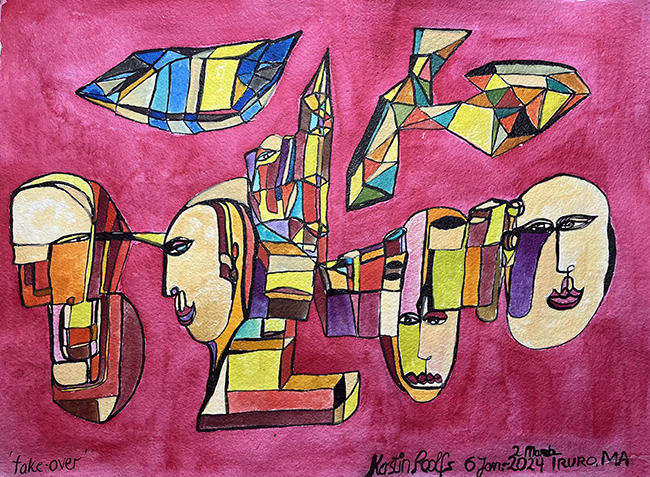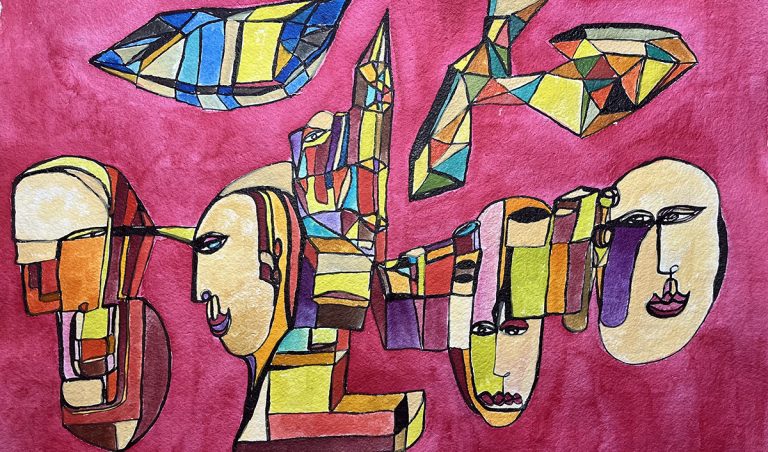Kerstin Roolfs is a German-American artist whose work delves into the realms of portraiture, sports, history, and politics. Drawing inspiration from the philosophies of Plato, the poetic brilliance of Goethe, and the intellectual depth of thinkers such as Sloterdijk, Hölderlin, and Adonis, Roolfs infuses her art with layers of meaning and contemplation.

Having transplanted herself from Berlin to the vibrant artistic hub of Williamsburg, Brooklyn, in 1994, and later to the Bronx, NY, in 2016, Kerstin has woven her experiences and observations into a tapestry of thought-provoking artwork. Her pieces have not only graced the walls of solo exhibitions but have also been featured in group showcases across the United States, Canada, Russia, and Europe, including museum exhibitions in her native Germany.
One of Roolfs’ recent works, titled “Take-over 2024,” stands as a testament to her exploration of humanity’s future. Executed in watercolor and sumi ink on handmade paper, this piece measures 23 by 30.5 inches and serves as a triptych that contemplates the destiny of our planet and its inhabitants. Beginning as small-scale sketches at the end of 2023, the project evolved into larger, more intricate watercolor and ink compositions.
The imagery within “Take-over 2024” is both captivating and haunting, drawing viewers into a world where the boundaries between humanity and technology blur with unsettling fluidity. Through the dominant burgundy-pink hue, symbolizing a future devoid of the lushness of nature, Roolfs creates a stark visual contrast that amplifies the tension between organic and synthetic elements. Within this dystopian landscape, humans are not merely inhabitants but rather amalgamations of flesh and machine, their forms merging seamlessly with the technological infrastructure that surrounds them. Against a backdrop of desolation, they navigate a surreal realm populated by flying objects rendered in cubist geometric shapes, each vessel a testament to the relentless march of progress and the inexorable fusion of man and machine.
These vessels, whether transporting people, hybrids, or the remnants of a bygone era, serve as harbingers of a future where traditional boundaries dissolve entirely, giving rise to new modes of communication, transportation, and existence. In the absence of familiar markers, Roolfs challenges viewers to confront the uncertain terrain of the future, where the very essence of humanity is called into question amidst the relentless march of technological advancement. As we gaze upon her work, we are compelled to grapple with the complexities of our existence and the choices that will ultimately determine the course of our shared future.
As we stand on the precipice of a new era, Roolfs’ work reminds us that the future is not predetermined but rather shaped by the collective actions and choices of humanity. Through art, she offers us a glimpse into what lies ahead, urging us to contemplate, question, and ultimately, to act.
In the hands of Kerstin Roolfs, art becomes more than mere expression—it becomes a catalyst for dialogue, a conduit for introspection, and a beacon of hope in an uncertain world. As we navigate the challenges of the present and the uncertainties of the future, may we find solace and inspiration in the timeless wisdom of her creations.

